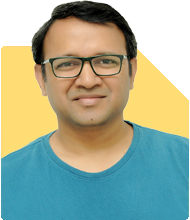Retiring at 60 with ₹1.2 Crore: How can I secure my savings for 25+ years?
Moneywize |181 Answers |Ask -Follow
Financial Planner - Answered on Feb 08, 2025

Sir I am 60 and I plan to retire in six months after a 35-year career in the public sector. I’ll receive a monthly pension of ₹50,000, but I also have a corpus of ₹1.2 crore from my provident fund, gratuity, and fixed deposits. I’ve historically preferred conservative investments and currently hold ₹40 lakhs in FDs, ₹20 lakhs in senior citizen savings schemes (SCSS), and ₹10 lakhs in tax-free bonds. I’m concerned about inflation eroding my returns over time. My spouse and I have monthly expenses of ₹40,000, but we want to ensure our savings last 25+ years while offering some growth. Should I explore balanced mutual funds, annuities, or SWPs from debt funds to balance safety and growth? What percentage of my corpus should remain in fixed income?
1. Core Strategy: Balancing Stability & Growth
Your primary goals are:
• Capital Preservation
• Inflation Protection
• Regular Income
Since you have Rs 50,000 in pension and Rs 40,000 in monthly expenses, your pension alone covers your basic needs. Your investments should focus on sustaining wealth and managing inflation.
2. Portfolio Allocation (Safety vs. Growth)
Given your risk-averse nature, a 70:30 allocation between fixed income and equity could work well:
• 70% in Fixed Income (Rs 84 lakh) for Stability
o Fixed Deposits (FDs) → Rs 30 lakh (existing Rs 40 lakh can be reduced to 30 for liquidity)
o Senior Citizen Savings Scheme (SCSS) → Rs 20 lakh (already invested, good for 5 years at 8.2% interest)
o Tax-Free Bonds → Rs 10 lakh (keep as is, safe & predictable)
o Debt Mutual Funds (SWP) → Rs 24 lakh
? Invest Rs 24 lakh in a corporate bond or dynamic bond fund
? Start Systematic Withdrawal Plan (SWP) of Rs 15,000–Rs 20,000 monthly (to fight inflation)
• 30% in Growth Assets (Rs 36 lakh) for Inflation Hedge
o Balanced Advantage Funds (Rs 12 lakh): These funds dynamically manage equity and debt, reducing risk.
o Large-Cap or Index Funds (Rs 12 lakh): Nifty 50 or Sensex funds for steady, long-term growth.
o Dividend-Yield Mutual Funds (Rs 6 lakh): Provide stable returns.
o Gold (Rs 6 lakh): Can be in sovereign gold bonds (SGBs) or gold ETFs for inflation protection.
3. Income Strategy: SWP + Interest
Your monthly pension of Rs 50,000 is enough for now, but you may need extra income later. Use:
• SCSS interest (Rs 16,000/month) + Tax-Free Bond Interest (~Rs 3,000/month)
• SWP from debt mutual funds (Rs 15,000/month from Rs 24 lakh in debt funds)
• FD interest (if needed, Rs 30 lakh in FDs can provide Rs 12,000–Rs 15,000/month)
This way, your pension covers essentials, and investments handle inflation without eroding principal.
4. Should You Consider Annuities?
• Annuities (like LIC Jeevan Akshay VII or HDFC Life Immediate Annuity) provide lifelong income but lock in money permanently.
• Since you already have a pension, you don’t need an annuity right now. But if you want to secure future cash flow, consider putting Rs 10-Rs 15 lakh in an annuity after age 70.
5. Action Plan for the Next 6 Months
• Restructure FDs: Keep Rs 30 lakh instead of Rs 40 lakh for better liquidity.
• Invest Rs 24 lakh in Debt Funds for SWP: Choose corporate bond or dynamic bond funds.
• Allocate Rs 36 lakh in Balanced/Equity Funds: Focus on inflation protection.
• Continue SCSS & Bonds: Good for stable income.
• Review Annuitization at 70: Not needed now, but worth considering later.
You may like to see similar questions and answers below
Ramalingam Kalirajan |8291 Answers |Ask -Follow
Mutual Funds, Financial Planning Expert - Answered on May 07, 2024
Ramalingam Kalirajan |8291 Answers |Ask -Follow
Mutual Funds, Financial Planning Expert - Answered on Jun 18, 2024
Ramalingam Kalirajan |8291 Answers |Ask -Follow
Mutual Funds, Financial Planning Expert - Answered on Jul 31, 2024
Milind Vadjikar |1189 Answers |Ask -Follow
Insurance, Stocks, MF, PF Expert - Answered on Nov 09, 2024
Dr Nagarajan Jsk |346 Answers |Ask -Follow
NEET, Medical, Pharmacy Careers - Answered on Apr 25, 2025
Nayagam P P |4463 Answers |Ask -Follow
Career Counsellor - Answered on Apr 25, 2025
Nayagam P P |4463 Answers |Ask -Follow
Career Counsellor - Answered on Apr 25, 2025
Nayagam P P |4463 Answers |Ask -Follow
Career Counsellor - Answered on Apr 25, 2025
Patrick Dsouza |1030 Answers |Ask -Follow
CAT, XAT, CMAT, CET Expert - Answered on Apr 25, 2025
Dr Dipankar Dutta |1168 Answers |Ask -Follow
Tech Careers and Skill Development Expert - Answered on Apr 25, 2025
Dr Dipankar Dutta |1168 Answers |Ask -Follow
Tech Careers and Skill Development Expert - Answered on Apr 25, 2025
Dr Dipankar Dutta |1168 Answers |Ask -Follow
Tech Careers and Skill Development Expert - Answered on Apr 25, 2025
Radheshyam Zanwar |1566 Answers |Ask -Follow
MHT-CET, IIT-JEE, NEET-UG Expert - Answered on Apr 25, 2025
Radheshyam Zanwar |1566 Answers |Ask -Follow
MHT-CET, IIT-JEE, NEET-UG Expert - Answered on Apr 25, 2025

























